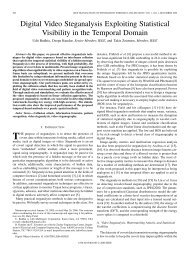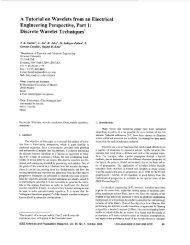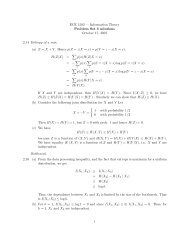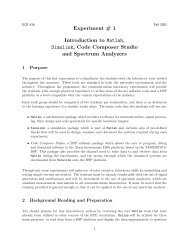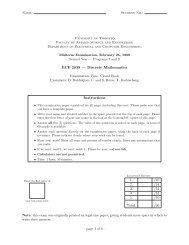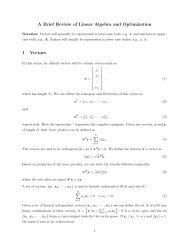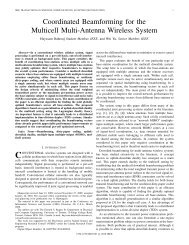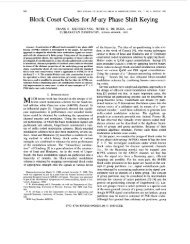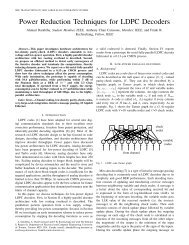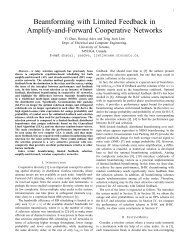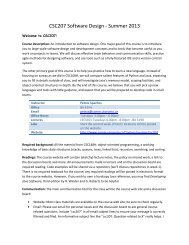The Gram-Schmidt Procedure and Orthogonal Projections 1 ...
The Gram-Schmidt Procedure and Orthogonal Projections 1 ...
The Gram-Schmidt Procedure and Orthogonal Projections 1 ...
Create successful ePaper yourself
Turn your PDF publications into a flip-book with our unique Google optimized e-Paper software.
Using your new modified GS procedure, try running:D = GS(H7);Z = abs(D * D’ - eye(7))Now what is the largest entry in Z?3 <strong>Orthogonal</strong> <strong>Projections</strong>Let P be a finite-dimensional subspace of an inner-product space V . Once an orthonormalbasis {w 1 , w 2 , . . . , w m } for P is obtained, the orthogonal projection of an arbitrary vectorv ∈ V on P is easily computed asˆv =m∑〈v, w i 〉w i .i=1<strong>The</strong> vector ˆv is the orthogonal projection of v on P <strong>and</strong> the components of the m-tuple(〈v, w 1 〉, 〈v, w 2 〉, . . . , 〈v, w m 〉)are the coordinates of ˆv with respect to the given orthonormal basis.Let B be an m × l matrix whose rows form an orthonormal basis for subspace P . (Forexample, B might be produced by your GS function.) Let v be an arbitrary 1 × l rowvector, <strong>and</strong> let ˆv be the orthogonal projection of v on P .• Give a Matlab or Octave expression (in terms of B <strong>and</strong> v) for the coordinatesof ˆv with respect to basis given in the rows of B.• Give a Matlab or Octave expression (in terms of B <strong>and</strong> v) for ˆv.5



